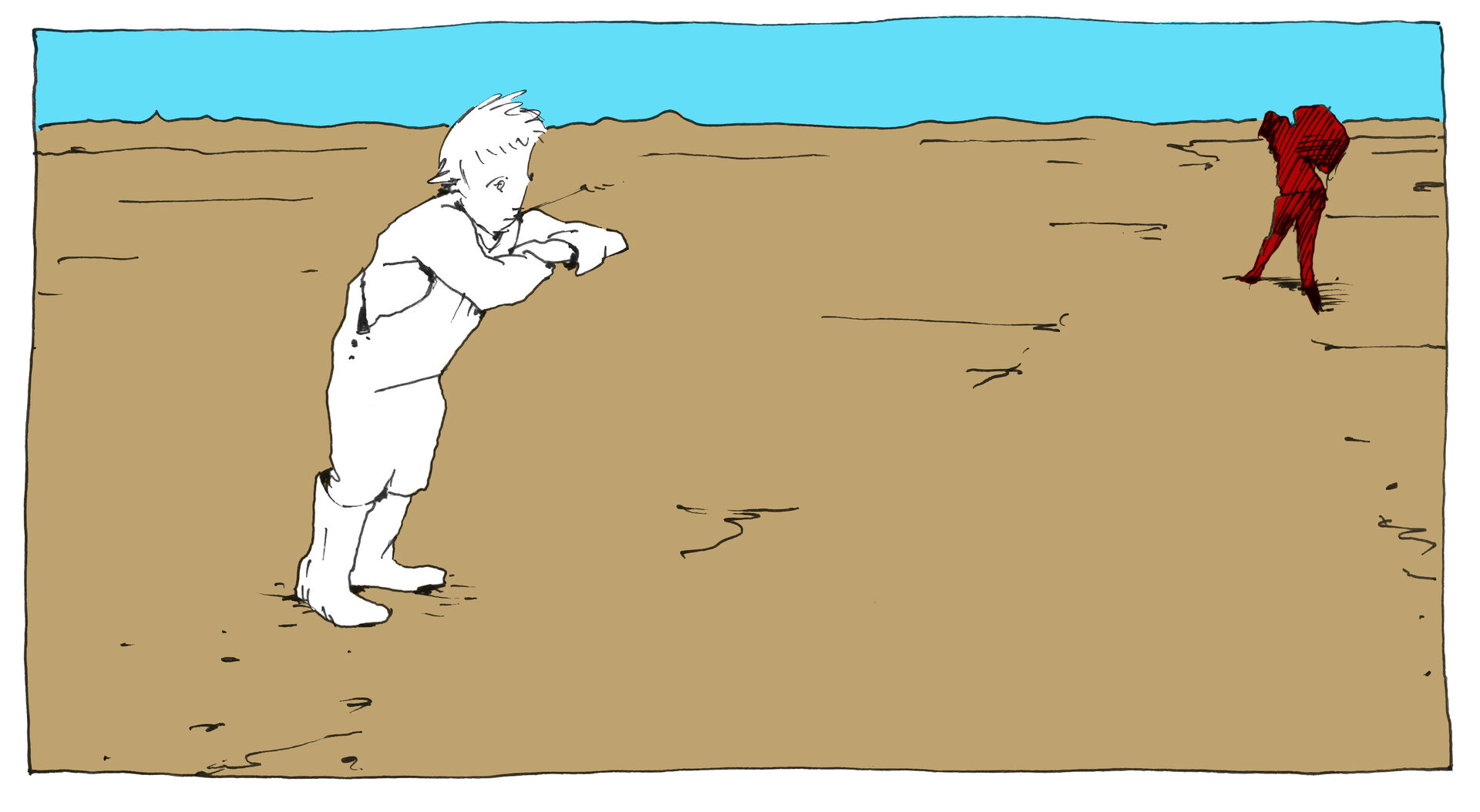Kari Korolainen (University of Eastern Finland) will explore comics-making in the context of a cultural study of borders. His ongoing interdisciplinary research links to cultural, folklore, and border studies and in addition to arts-related research and comic-based research. One of the central aspects of the work is to explore his own drawing and comics-making together with the research.
“I started experimenting with drawing when studying former Finnish folklore drawings at the archives. Later, I started to think of drawing in more close relation to my research topics. For example, I have pondered several border studies -related concepts and schemas through the comics-making. Some of these artworks are more traditional cartoons, some more experimental visual works. Engrossing in these kinds of processes led me to think also how I could combine comics and research in more thorough way than with the single drawings or when making short comics. How could it be possible to mix long lasting artistic work and research? Eventually, I have made two comic albums, which relate to the border research topics. In addition, I still do single drawings as I think they are useful in many ways.” – Kari Korolainen
Fabian Heffermehl (University of Oslo) will offer a theoretical and graphic defense of the carnal, tactile face; of the unseen inside of the face—the flesh turned to the cranium—as a source for the imagination; of the feeling of face as an aesthetical claim. The 17th-century philosopher and polymath Thomas Browne wrote: “eyes and noses have tongues.” But what do you see with your tongue, or taste with your eyes? Here I pose that question instrumentally: not so much in a futile search for an answer, as in an attempt to demonstrate a shift from the eye to the skin. The perception of a tactile face, felt from its inside by the inner organs of the head, may challenge the eye, vision and distance.
biographical details:
Kari Korolainen is a folklore and cultural studies researcher and cartoonist who is interested in the epistemological, political, and aesthetic aspects of culture and cultural traditions, folklore. His research touches on disciplinary history, folkloristic drawings, object environments, borders, and borders studies, as well as fine arts and aesthetics related issues, such as artification and home decorations. In addition, his work regularly combines research and art practices. His recent studies involve cartoon-making and address folklore and borderlands life. He also has a degree in Fine Arts and formerly, before his research career, he worked as an artist, graphic designer, and art teacher.
The ongoing project “Borderscapes within Folklore: An Interdisciplinary and Artmaking Viewpoint on Borders in Folklore Materials” (Kone Foundation, 2022–2025) focuses on borderscapes, the diversity of borders from the viewpoint of vernacular comprehension, folklore, and visual arts. His research visit to the Department of Literature, Area Studies and European Languages (ILOS) at the UiO links to this project. He is Senior Researcher at the Karelian Institute (KTL), an interdisciplinary and international research institute with a special focus on the Finnish and Russian border area, and his research has links to the University of Eastern Finland (UEF) profile area Cultural Encounters, Mobilities, and Borders (BOMOCULT).
Fabian Heffermehl (b. 1983), researcher at the University of Oslo, studied graphics and Russian culture in Moscow, Berlin, Oslo and Uppsala. He has also worked for the Norwegian Refugee Council in Azerbaijan and Armenia. PhD in 2015 with a book on iconoclasm and mathematics in Russian modernism. His scientific interests include the icon in light of modernistic interpretations, artistic research, Russian literature and drawing.
